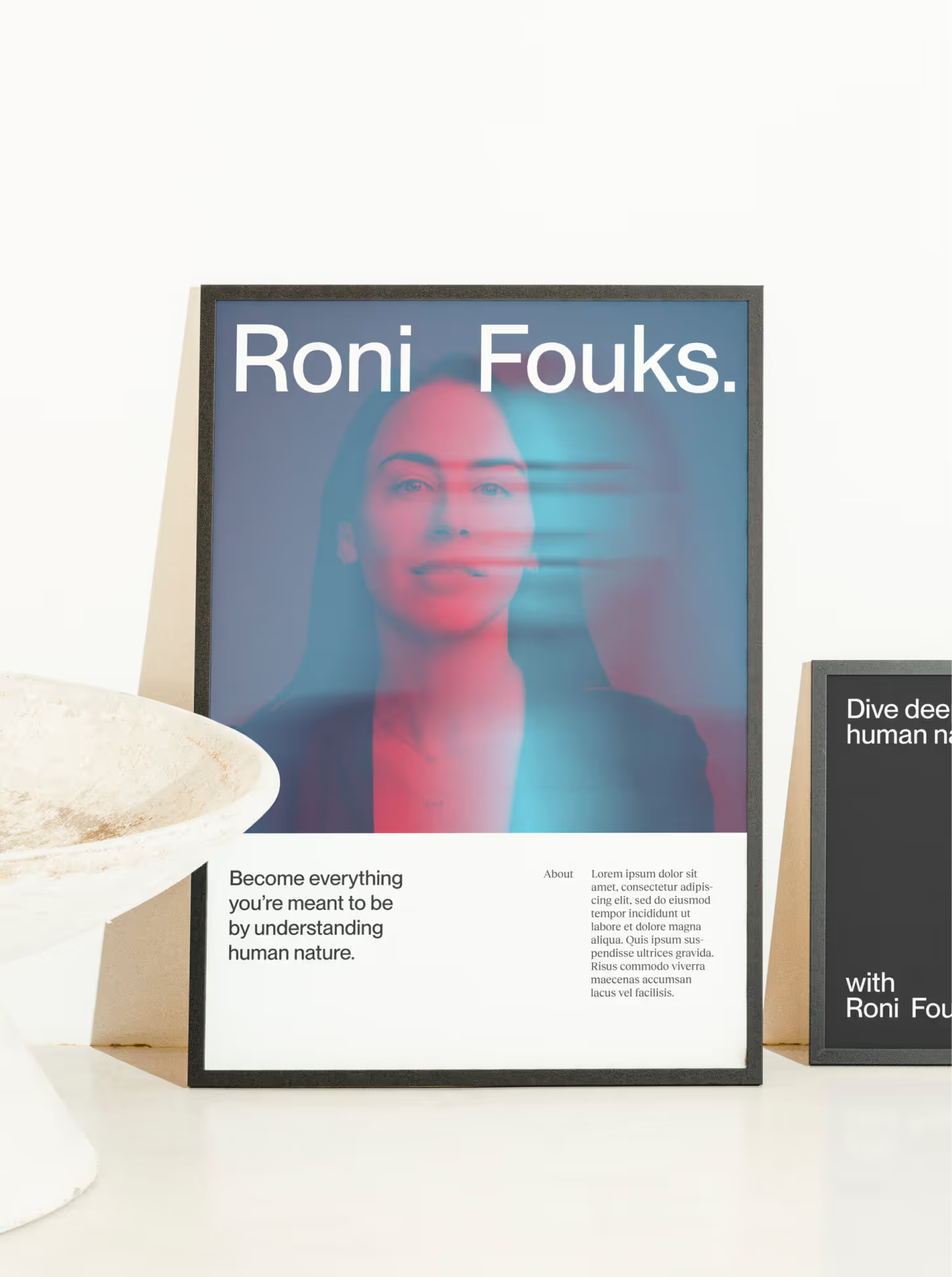
How to Create a Great Logo: A Guide by a Leading Branding Agency
A great logo helps any business stands out. Is that true? Unfortunately yes. But what makes a good logo? And how to design one? Let's dive in


What is a Logo?
You’ve likely imagined it—a logo so striking, so perfectly designed, that it draws admiration wherever it’s seen. Whether on a T-shirt or plastered across a billboard in the bustling streets of New York, Paris, or Tel Aviv, your logo should make a lasting impression. But what exactly is a logo? Essentially, it’s a geometric shape, text, or symbol meant to encapsulate your brand’s message in a single form. This logo serves as a visual shorthand for your brand’s values, industry, and price positioning. (Yes, all of that conveyed through a simple shape!)
A logo is a crucial component of your company's branding. On its own, it might not seem significant, but when integrated into your broader brand strategy, including advertising campaigns and overall visual identity, it becomes a powerful signature. It’s more than just a catchy slogan or a clever marketing message—it’s what your audience will remember about you.
Take Apple as a prime example. The minimalist design of their logo mirrors the sleek and elegant design of their products. This alignment between brand identity and visual representation is what makes a logo truly impactful.
Why Do You Need a Logo? And What Difference Does It Make for Your Business?
When launching a business, especially in fast-paced markets like those in Israel, New York, or Paris, speed is of the essence. Every successful entrepreneur will tell you that validating your value proposition, finding market fit, and continuously iterating are crucial steps. However, not everything can be done solo—nor should it be.
Creating a logo is as vital as perfecting your product because it’s how your audience will perceive you. Think of your logo as the face of your business. It plays a key role in helping you stand out in crowded markets, reinforcing your brand identity, and communicating your core values effectively. It’s the symbol your customers will associate with you every time they think about your products or services.
In today’s digital world, where people skim over text and slogans, your logo—your brand’s visual identity—becomes the primary tool for conveying your message. A well-designed logo allows consumers to grasp the essence of your brand and product instantly.
A great logo, executed by a skilled branding agency, conveys crucial information at a glance: your industry, values, and the quality of your brand.
The Difference Between a Good and a Bad Logo
A good logo distinguishes a brand that inspires trust from one that doesn’t. Picture someone who is well-dressed, clean, and polished. This person immediately commands attention and respect, much like a well-designed logo. A good logo is aesthetically pleasing, relevant, memorable, and timeless.
On the flip side, imagine someone who arrives disheveled and unkempt. This person leaves an impression of disorganization and incompetence. A poorly designed logo can have the same negative impact, potentially harming your brand more than you realize.

How to Create a Logo Step by Step
Step 1: Define Your Brand and Market Positioning
Start with a thorough analysis of your brand and how you want it to be perceived in the market. This includes:
- Brand Strategy: Identify your brand’s core values. Don’t worry; it’s not as complicated as it sounds. Your values should naturally align with who you are. What do you want to represent? Generosity, performance, flexibility, humanity? These values will form the foundation of your logo design, helping your designer understand the essence of your brand.
- Market Positioning: Setting clear objectives is crucial for achieving results. Position your brand within a specific market segment, analyze your direct competitors, and stay updated on global trends. The more you understand your market, the better you can differentiate yourself from the competition. As Peter Thiel emphasizes in Zero to One, innovation is key to success.
- Defining Your Target Audience: Understanding your target audience is essential for a successful strategy. Knowing who you are addressing helps you create a visual identity that resonates with them. Whether you’re targeting engineers who prefer designs focused on performance and functionality or designers drawn to minimalistic and creative styles, a clear understanding of your audience ensures your message connects effectively.
Step 2: Create a Mood Board
A mood board is a collection of images, visuals, objects, textures, or any other elements that inspire your design concept. It helps refine your ideas and establish a cohesive vision. If you’re working with a team, a mood board facilitates idea-sharing and ensures that everyone is on the same page.

Step 3: Typography Selection
Choosing the right typography is crucial for setting the tone and conveying your brand values. Typography influences how a word or text is perceived visually and emotionally. It is an essential element of your brand's graphic identity, providing an immediate impression of your brand.
Different types of typography convey different messages:
- With Serif: Originally used for print, serif fonts create a visual link between letters, making text easier to read. Serif fonts are timeless and classic, ideal for conveying reliability and tradition.
- Sans Serif: Sans serif fonts emerged later to modernize typography. These fonts are now widely used and are perfect for a modern, clean, and minimalist appearance.


Step 4: Design the Symbol
Including a symbol in your logo is optional, but it can enhance brand recognition. Symbols like those used by Starbucks, Apple, and Nike may not initially convey much about the brand’s values, but over time, they become powerful tools for brand recognition.
- Shapes and Geometry: Use shapes that reflect your brand’s values. Round shapes can suggest warmth and friendliness, while angular shapes might represent strength and stability.
- Colors: Choose a color palette that appeals to your target audience and respects cultural codes. Popular colors include green for health and environmental consciousness, blue for stability and security, and red for energy and excitement.
Step 5: Create Your Logo
Combine all these elements to create your logo. Whether you use professional design software or hire a graphic designer from a reputable branding agency, ensure that your logo is:
- Timeless: A design that remains effective across years, regardless of trends.
- Versatile: The logo should work well in both color and black and white.
- Memorable: The design should be simple yet distinctive.
Whether you’re working with a branding agency in Israel, New York, or Paris, following these steps will help you create a logo that not only looks great but also effectively represents your brand in a competitive market.
Conclusion
Creating a logo involves a step-by-step process that starts with defining your brand’s identity and understanding your market, then moves through selecting the right typography, colors, and symbols to bring your vision to life. Each step plays a crucial role in ensuring your logo effectively represents your brand and resonates with your target audience.
Remember, simplicity is key. A clean, clear, and versatile design ensures your logo stands the test of time and remains memorable. Avoid overcomplicating the design—focus on clarity, and always test your logo in different formats to guarantee its effectiveness across all platforms.
FAQ's
Q: Why is defining my brand and market positioning important when creating a logo?
Defining your brand and market positioning helps ensure that your logo aligns with your core values and resonates with your target audience. It gives direction to your design and helps differentiate your brand from competitors.
Q: What is a mood board, and how does it help in logo design?
A mood board is a collection of images, textures, colors, and other visual elements that inspire your design. It helps you visualize your brand’s style and ensures a cohesive design approach, especially when working with a team.
Q: How do I choose the right typography for my logo?
Choosing the right typography depends on the message you want to convey. Serif fonts are more traditional and reliable, while sans serif fonts offer a modern and minimalistic appearance. Your typography should reflect your brand’s tone and values.
Q: Do I need a symbol in my logo?
While not mandatory, symbols can enhance brand recognition. Over time, symbols like the Nike swoosh or Apple’s apple have become iconic. Whether or not you include a symbol depends on how you want your brand to be perceived.
Q: How do I select the right colors for my logo?
Choose colors that appeal to your target audience and reflect your brand’s message. Different colors convey different emotions—green often symbolizes health and environmental consciousness, while red represents energy and excitement. Ensure that your colors are culturally appropriate and resonate with your audience.








